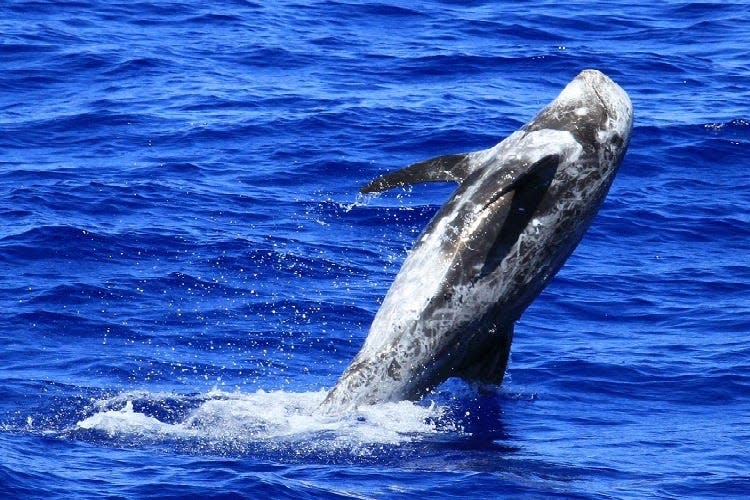What marine animals swim in the deep water canyons southeast of Cape Cod? New England Aquarium knows
BOSTON — The Northeast Canyons and Seamounts Marine National Monument is teeming with life, according to a recent survey by the New England Aquarium.
A aerial survey at the reserve, which is 130 miles southeast of Cape Cod, spotted over 500 animals and fish including dolphins, sharks, whales and rays, according to a press release.
More: Are rescues on Cape Cod making difference for this endangered sea turtle?
"We saw a huge number. It was amazing," said Sharon Hsu a aerial observer with the Aquarium. "It was my first survey and the monument is know for its high species diversity and abundance of animals. It has a high species diversity because it's located on the edge of the continental shelf and there are deep sea canyons. And it is a protected area as well.".
The survey results include 24 Atlantic spotted dolphins, one blue shark, 86 bottlenose dolphins, 21 Chilean devil rays, two fin whales, 169 Risso’s dolphins, 86 hammerhead sharks, 10 ocean sunfish, known as Mola mola, 15 pilot whales, 16 common dolphins, 75 striped dolphins, two tiger sharks, four unidentified beaked whales, and one whale shark.
"We focus on marine animals," Hsu said. "Whales, dolphins, but we note sharks as well. We fly down six tracks or lines and have observers at each side of the plane and note the animals we see."
The survey area is 130 miles or so southeast of Cape Cod. The aquarium will do a survey once a year and has done so for a dozen years. They will do them during different seasons including the winter. .

The monument, which covers 4,913 square miles north and east of Cape Cod, was designated in 2016 by President Barack Obama. It covers four underwater seamounts and three canyons.
"For me personally the most exciting thing was a whale shark," Hsu recalled. "I've only ever seen them in the tropics so it was a pleasant surprise. The species we see we consider offshore species although there is some overlap with inshore. The area is known for sperm whales."
The aquarium has done 12 surveys of the region over the years, and recently documented blue whales, beaked whales, and whale sharks.
More: Dolphin strandings are now year-round on Cape. Here's what experts suspect is causing it.
Earlier this year Aquarium scientists gathered their data and published a paper in Conservation Science and Practice. They reviewed over 180,000 sightings.
In June 2020, President Trump signed a proclamation lifting the prohibition of commercial fishing. A study by the aquarium, using their data, suggests commercial fishing would increase the risk of entanglements, bycatch and habitat destruction.
President Biden restored the protections when he took office in January 2021.
The purpose of the surveys is data collection. The survey this summer was sponsored by the Conservation Law Foundation and the National Resource Defense Council.
Hsu has moved to Massachusetts from California to help continue the work. She's part of the spatial ecology team at the Aquarium.
"It's important to do this and I'm glad I get to do it," she said.
Keep connected with the Cape. Download our free app.
This article originally appeared on Cape Cod Times: Marine animals swimming 130 miles southeast of Cape Cod over 500

